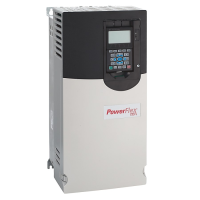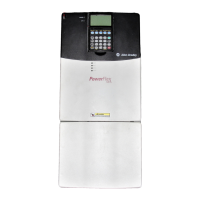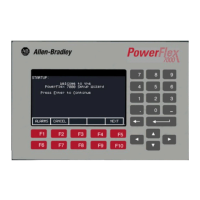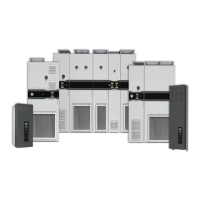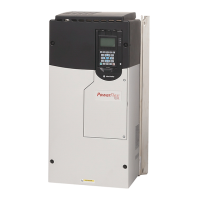Drive Overload 2-89
Current Limit
Current Limit as selected by the user can be reduced by the thermal
manager. The resulting active current limit may be displayed as a test point
parameter.
The active current limit will always be less than or equal to the value
selected by the user, and will not be less than flux current. When drive
temperature reaches the level where current limit would be clamped, the
Drv OL Lvl 2 Alarm is turned on. This alarm will be annunciated even if
reduced current limit is not enabled.
The active current limit is used during normal operation and during DC
injection braking. Any level of current requested for DC injection braking is
limited by the Active Current Limit.
Configuration
The [Drive OL Mode] allows the user to select the action(s) to perform with
increased current or drive temperature. When this parameter is “Disabled,”
the drive will not modify the PWM frequency or current limit. When set to
“Reduce PWM” the drive will only modify the PWM frequency. “Reduce
CLim” will only modify the current limit. Setting this parameter to
“Both-PWM 1st” the drive will modify the PWM frequency and the current
limit.
DTO Fault
For all possible settings of [Drive OL Mode], the drive will always monitor
the T
j
and T
Drive
and generate a fault when either temperature becomes
critical. If T
Drive
is less than –20° C, a fault is generated. With these
provisions, a DTO fault is generated if the NTC ever malfunctions.
Temperature Display
The Drive’s temperature is measured (NTC in the IGBT module) and
displayed as a percentage of drive thermal capacity in [Drive Temp]. This
parameter is normalized to the thermal capacity of the drive (frame
dependent) and displays thermal usage in % of maximum (100% = drive
Trip). A test point, “Heatsink temperature” is available to read temperature
directly in degrees C, but cannot be related to the trip point since
“maximums” are only given in %. The IGBT temperature shown in Figure
2.20 is used only for internal development and is not provided to the user.
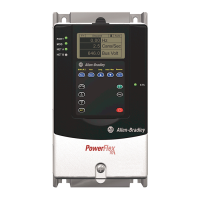
